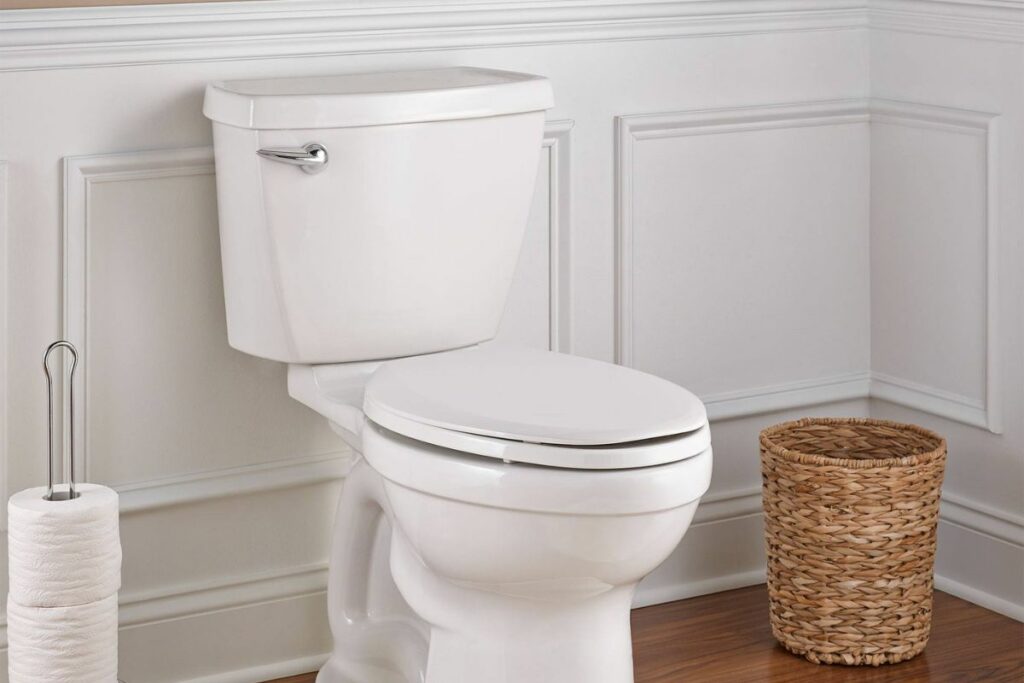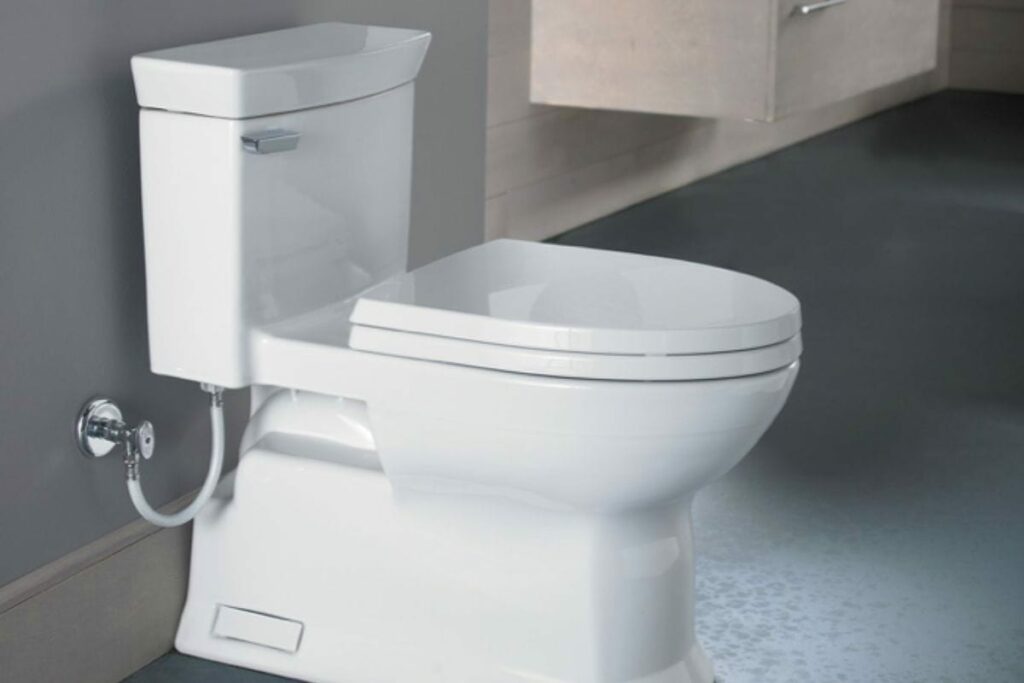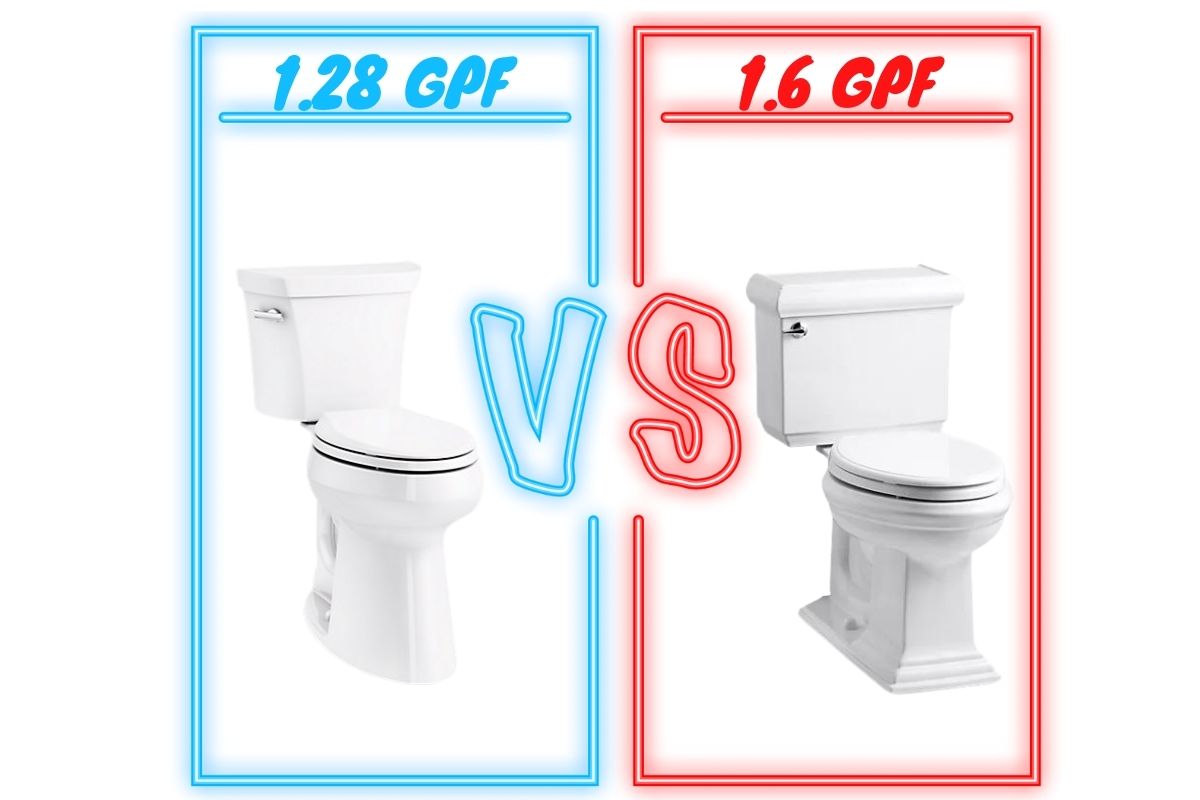You go to a shop to buy a new toilet. The shop owner asks you which kind of toilet you want, a 1. 28 GPF or 1.6 GPF. You get confused; you start wondering what is the difference between 1.28 GPF and 1.6 GPF models. Which should you choose?
GPF stands for “gallons per flush” and it is a measure of how much water your toilet uses with each flush. A 1.6 GPF Toilet uses 1.6 gallons per flush, while a 1.28 GPF toilet uses 1.28 gallons per flush. Both of these flushing systems are considered to be high efficiency and low flow, but they have different performance specs.
In this article, we will break down the differences between these two types of toilets and help you decide which one is right for your home!
History of Low Flow Toilets
We waste a lot of water on our household chores, especially in bathrooms. Each day gallons of water are wasted down a toilet during a flush. In fact, toilets account for approximately 30% of indoor water use in the home.
You know that water resources have been depleting over time, so researchers have always been exploring ways to reduce water consumption by introducing water-efficient products.
In the early 70s, the toilet used up to 7 gallons per flush, and if one used a toilet 5 to 6 times, that wasted 35 to 40 gallons of water each day. To cope with this problem, low-flow toilets were introduced, which almost reduced the water consumption to 2 to 3 gallons per flush.
Over the years, technology improved and low-flow toilets became even more efficient. In 1992, then US President, George Bush signed an energy policy act. And then a law was passed that made the use of low flush toilets, which consumed 1.6 gallons per flush, mandatory in all states.
However, this did not end here since environmentalists further wanted to reduce water consumption. The US Environmental Protection Agency (EPA) started a WaterSense Program and introduced WaterSense toilets. These toilets just utilized 1.28 gallons per flush.

1.6 GPF Toilets: An Overview
1.6 GPF toilets were introduced in 1992 as a part of the energy policy act. Since then there are a standard in most states of the US. They are a kind of low-flow toilets that only consume 1.6 gallons or 6 liters per flush.
Now, let’s look at their pros and cons.
Pros:
- Provide better flushing creating lesser stains.
- Don’t get clogged often.
- Less time is spent cleaning it.
Cons:
- Waste up to 1752 gallons of water a year
- Louder flush.
- Use is restricted in some states.

1.28 GPF Toilets: An Overview
1.28 GPF are high-efficiency toilets introduced by the Water Sense Program of EPA. Many local states (California, Texas) have now made it mandatory to use these toilets.
Pros
- Use 20% less water compared to a 1.28 GPF toilet
- Environmentally friendly.
- Save 1752 gallons of water a year
- Flush quietly.
Cons
- Flush is not as powerful as 1.6 GPF toilets.
- Stains are often left.
- Need more cleaning.
- Prone to get clogged.
1.6 GPF Toilet Vs. 1.8 GPF Toilet
Apparently, you wouldn’t notice any difference in the looks of both the toilets. Both of these look pretty the same, the difference is internal.
So, let’s compare these toilets, in terms of water efficiency, flush power, cost, and maintenance.
Water Efficiency
A 1.6 GPF uses 1.6 gallons of water per flush, while a 1.28 GPF takes 1.28 gallons per flush. So, there is a difference of around 0.32 gallons per flush.
In other words, a 1.28 GPF toilet is around 20% water efficient compared to 1.6 GPF. The difference may seem quite small to you but this 0.32 gallon does make a lot of difference.
Let’s see the bigger picture. On average, an American flushes five times a day. Considering a family of 3 people, the toilet will be flushed (3 x 5) 15 times. If you multiply it by 0.32, that’s 4.8 gallons. Calculating it for a year, that would be 1752 gallons. So, you are saving 4.8 gallons a day, and 1752 gallons a year, just by using 1.28 GPF toilets over 1.6 GPF Toilets.
If each American family uses the same toilet, millions of gallons of water would be saved.

Flush Power
Some people believe that 1.28 GPF toilets don’t flush as well as 1.6 GPF. Is that true?
In some cases, this theory is quite true. For clearing larger wastes, 1.28 gallons of water does not seem to be not enough. And in some scenarios, you might seem to have skid marks on the bowl. In that case, people usually have to flush twice, and that would consume 2.56 gallons of water. However, in normal use, this toilet seems fine.
1.6 GPF sends more water volume into the tank and it clears the waste more effectively as compared to its counterpart. In addition, 1.6 GPF has been in the market for about 2 decades. So, over the years its flushing systems have significantly improved. It may be superior in terms of flush power to a 1.28 GPF now, but in the coming years, the flushing power of 1.28 will be greatly improved.
The stronger flush power also indicates that 1.6 toilets would clog less often. At this point, the 1.6 GPF is better than its counterpart.
Cost
On average, the 1.28 GPF toilet costs higher than the 1.6 GPF toilet. But, as mentioned earlier, using a 1.28 GPF toilet, you will save around 1752 gallons of water in a year. How much that would reduce your water bill?
In addition, due to the introduction of the WaterSense program, many communities in the US now offer subsidies and rebates on the purchase of WaterSense toilets.
So, if you are considering buying a 1.28 GPF toilet, the cost isn’t a factor that would worry you much. In fact, it would help you save money in the long run.

Cleaning and Maintenance
Indeed, most people don’t enjoy cleaning a toilet, and one somehow considers these things while choosing the toilet.
Since the 1.28 GPF considerably has less flushing power, you may see marks inside or a blocked toilet frequently. This particularly happens when the toilet is commonly used. Therefore, cleaning the toilet is often required. In comparison, you will find that 1.6 GPF toilets are less susceptible to this issue.
So, if your friends visit you regularly, and your toilet seems to be used a lot, you can consider buying a 1.6 GPF toilet.
State Restrictions
Another thing you would be surprised to know is that not all states allow you to use 1.6 GPF toilets. In California, Texas, and Colorado, only high-efficiency 1.28 GPF toilets are permitted. The 1.6 GPFs are not sold due to strict regulations.
So, you should check your local state’s regulation, before you decide to get a 1.6 GPF toilet.
Which should you choose?
The choice of toilet depends on your usage. If the toilet is often used, then 1.6 GPF might be suitable as it clears the waste efficiently and doesn’t leave any stains. However, some states do not permit its use. So, in that case, the only option you have is 1.28 GPF toilets.
We also suggest buying 1.28 GPF toilets because they save water and money in the long run. Over time, their flushing capabilities will get enhanced.

Amos Christen graduated with a bachelor’s degree in Interior Design from Drexel University — Philadelphia, PA. Since 2003, Amos has worked with top interior design professionals in this area, including architects and interior/graphic/lighting designers. As a skilled interior designer, Amos Christen is highly versed in fine arts and crafts and uses that to supplement his main area of expertise. He often publishes articles related to home décor on several websites, including Sprucetoilets.com, Sprucebathroom.com, and Mybesuitedhome.com. He also contributes to leading interior design magazines.
